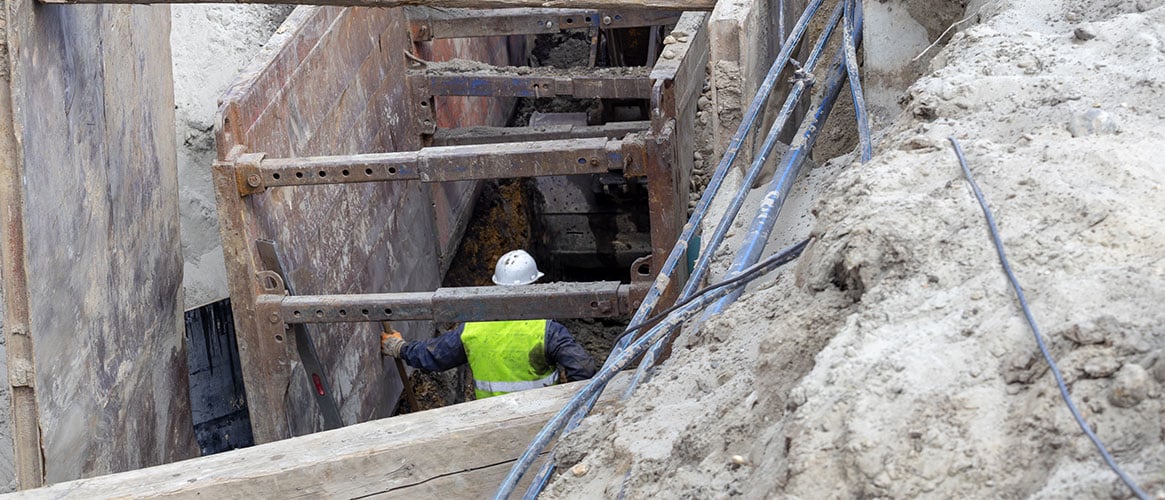It’s the first day on the job. Your employees are working with an equipment operator to expose some underground sewage lines that a plumber will work on. The excavator finishes the rough excavation and begins to exit. One of your workers grabs a shovel and prepares to jump into the trench when someone yells, “Stop!”
Just because the operator finished digging the trench, doesn’t mean it’s safe to enter. Every trench is at risk of caving in at any time without warning. Vibrations of nearby traffic or construction equipment can trigger a cave-in. So can the weight of equipment too close to the trench and the condition of the soil.
What your employees need to know about trench cave-in protection
Work in and around the trench should never begin without an approved cave-in protection method in place. These include:
- Shoring: Timber, mechanical, or hydraulic system structures that support the sides of a trench.
- Sloping: Forming sides of an excavation that are inclined away from the excavation itself. The proper incline angle varies. It's based on the differences in the soil type, environmental conditions, and application of surcharge loads.
- Benching the ground: Forming a series of horizontal levels or steps, usually within vertical or near-vertical surfaces between levels.
- Trench box: A box placed inside the trench with walls high enough to protect workers if the sides of the trench fail.
What your employees need to do to stay safe while working in a trench
Each protection method has its own limitations, so workers should never move outside the protected area. Many workers have been injured or killed because they left the area with the cave-in protection.
Additional steps your workers should follow include:
- Locate the entry/exit points for the trench. These are these how workers access and leave the trench under normal circumstances. Equally as important, they're also the escape route should something go wrong.
- Be aware of surroundings at all times and watch for hazards while working in or around trenches.
- Always watch for changes from the day before, e.g. have water, fissures, or any new dirt appeared in the trench? Should there be any changes, the employee needs to exit the trench immediately and inform the “competent person” in charge.
- Never jump over a trench. Always walk around the trench or use approved walkways/bridges.
- Occasionally, trenches may also present additional hazards. Thse could include oxygen deficiency, flammable gases, or atmospheric contaminants. Testing and adequate precautions must be taken to protect against these conditions.
What to cover at your safety meeting on working in a trench
A competent person must be on site to conduct inspections prior to anyone entering the trench each day and throughout the shift as needed. This person identifies cave-in potential or any other possible hazards, and must take prompt action if any hazards exist.
Make sure your employees know that they must check with the competent person every time they enter the trench.
Other things to cover at the meeting include:
- A review of your site-specific emergency plan. This includes what to do should someone need to be rescued from a collapsed trench.
- A demonstration and discussion about the protection method you will use and its limits.
- Instruction on how to install the protection method.
- Location of entry and exit points.
- Identification of any other hazard controls that may be necessary (i.e. air monitoring).
Stress the importance of safety with your employees and remind them frequently why the safety measures are in place. Because the trenching area can be unstable, your employees are at serious risk if you don’t emphasize or they don’t follow safety precautions.

